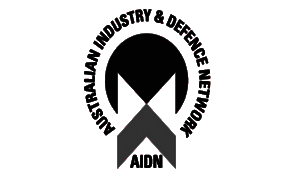
Blog
The Shocking Dangers of Workplace Burnout
Burnout is a common health concern in the workplace. Sadly, burnout can affect any worker resulting in health complications and reduced productivity at work. It’s not just in the office where employees are at risk of burning out. During the COVID pandemic in 2020 and 2021, some studies suggested that near 70 percent of workers were showing signs of employee burnout.
How can burnout impact on your health? How can you recognize the workplace burnout symptoms? This article explores the effect of stress and burnout in the workplace so that you can take steps to prevent it.
What is Burnout?
According to the World Health Organization, burnout is an occupational phenomenon. Rather than being a medical condition, burnout is a syndrome recognised by several specific factors. A person with burnout usually experiences the following:
- Exhaustion or feelings of depleted energy
- Feeling distanced from work or colleagues
- Increased negativity regarding work
- Reduced productivity
It’s good to remember that although burnout is always related to stress, not everyone who experiences stress get burnout

How Common is Burnout at Work?
Experiencing stress and burnout in the workplace is surprisingly common. A Gallup study reported that nearly two-thirds employees experience workplace burnout at some point in their career. With burnout hitting an all-time high, it’s not surprising that its effect is impacting on careers. Burnout is linked with high blood pressure, obesity, frequent illnesses, depression, and heart disease.
The Mayo Clinic reports that causes of workplace burnout can include unclear expectations, lack of control, problems with colleagues, and work-life imbalance.
Related reading: Five strategies for better work-life balance.
The Signs of Employee Burnout
The first step in preventing workplace burnout is to identify the first signs. Some symptoms of workplace burnout include difficulty concentrating, low energy levels, fatigue, irritability, headaches, disrupted sleep patterns, and depression.
Of course, any of the typical signs of employee burnout can be linked to other health issues.
The Dangers of Burnout in the Workplace
Let’s look at some of the risks to your health if you suffer from workplace burnout.
Extreme exhaustion
One of the most common results of burnout is extreme fatigue. Of course, it’s normal to feel tired from time to time or exhausted after a long day in the office. However, burnout can leave you with constant extreme exhaustion. Very often, the lethargy impacts on productivity, performance, and personal life.
Frequent illnesses
Burnout impacts on the immune system. A weakened immunity puts a person in danger of getting sick more frequently. This can be something like catching the common cold more often or taking longer to recover after a serious illness or operation. In the general workplace, burnout can also cost employers because employees have to take more sick leave.
Health complications
Chronic stress causes high cortisol levels in the body which lead to inflammation and other chronic conditions. Doctors say that unaddressed workplace burnout can put a person at risk of heart disease, high blood pressure, type 2 diabetes, and metabolic syndromes. Even though burnout may not be a direct cause, it can increase the risk of developing chronic health problems.
Increased physical pain
Another danger of prolonged burnout in the workplace is greater physical pain. A 2017 study on the physical effects of burnout found that pain was a complication. Researchers found that stress and workplace burnout can cause headaches, musculoskeletal pain, and gastrointestinal problems.
Depression and anxiety
Many of the effects of burnout—frustration, fatigue, cynicism, and negativity—put a person in danger of becoming depressed. Burnout can also be a result of a lack of influence over decisions, a dysfunctional workplace, or lack of social support—all factors that can lead to depression. A 2019 systematic review found a “significant association between burnout and depression and burnout and anxiety”.
Workplace Burnout — What to Do About It
Realizing that burnout can have serious consequences is a motivating factor to do something about it. What can you do if you are experience workplace burnout symptoms? Here are a few suggestions from the Mayo Clinic:
- Weigh up options—It’s best to speak to your supervisor or someone from HR about your concerns. It’s always in an employer’s interest to look after their employees’ health.
- Get support—Reach out to friends, loved one or trusted colleagues to talk about your feelings.
- Take time out—It’s vital to take time out every day and every week to relax. Also, schedule regular exercise to reduce stress and help improve your mental well-being.
Recent Posts
-
Working From Home — Ultimate Security Tips for a Safe Home Office
-
Unexpected Ways Stress Affects Your Body
-
The Worst Mistakes to Make When Working from Home
-
The Undeniable Worst Mistakes to Make in a Meeting
-
The Top 6 Myths About Leadership Debunked
-
The Best Apps for Busy Professionals
-
Is Telecommuting the Answer to Work-Life Balance?
-
The Importance of Career Goals to Boost Success at Work
-
The Shocking Dangers of Workplace Burnout
-
How to Restart Your Positive Emotions
























